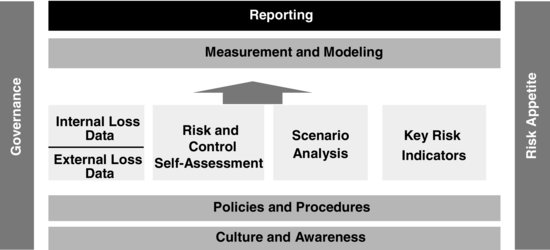CHAPTER 13
Reporting
In this chapter, we investigate reporting tools that empower the operational risk function with the opportunity to contribute to the business decision making at the firm. We consider loss data reporting in some depth and also discuss reporting on the other elements in the framework including risk and control self-assessment, key risk indicators, and scenario analysis. Examples of fictional data will be used to demonstrate how risk analysis can be applied to raw data in order to provide relevant reporting conclusions that can drive business decision making.
ROLE OF REPORTING
An operational risk framework is designed to identify, assess, monitor, control, and mitigate operational risk. All of the elements of the framework contribute to these goals, but without effective reporting even the best of programs will be ineffective in changing the risk culture of the firm. The place of reporting in the operational risk framework is illustrated in Figure 13.1.
FIGURE 13.1 The Role of Reporting in the Operational Risk Framework

The reporting of operational risk is key to the program's success. There are many ways to ensure that the reporting of each element drives action, and to protect against the danger of producing reporting that receives a “so what?” response.
Generally, an operational risk department will be looking to report on several things, including:
- Loss ...
Get Operational Risk Management: A Complete Guide to a Successful Operational Risk Framework now with the O’Reilly learning platform.
O’Reilly members experience books, live events, courses curated by job role, and more from O’Reilly and nearly 200 top publishers.

